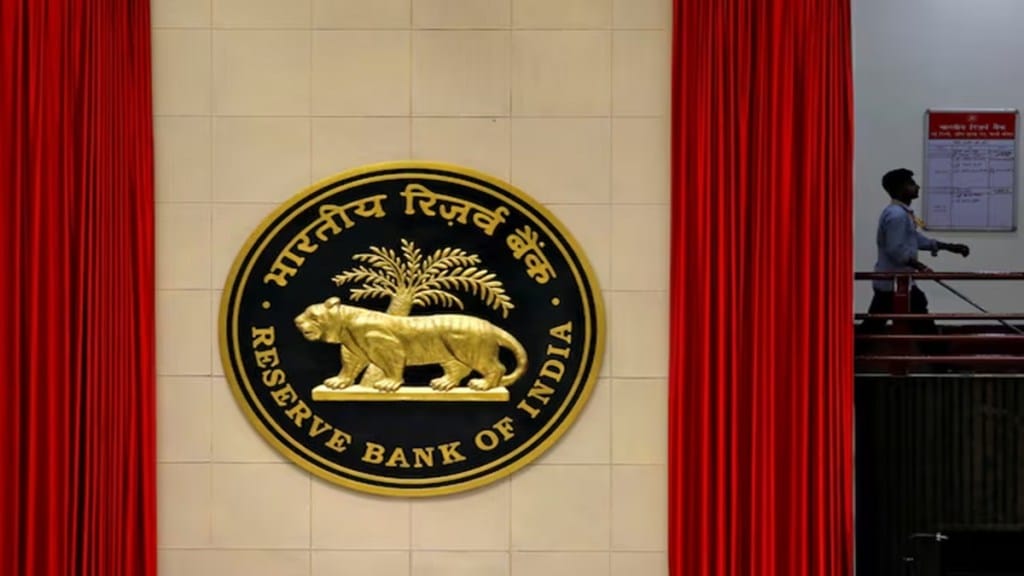The Monetary Policy Committee of the Reserve Bank of India (RBI) is expected to keep the policy repo rate unchanged on the back of lower inflation due to the recent GST cuts and rupee facing pressures, said economists and market players in an FE poll.
Almost 85% of the 12 experts in the poll believe that there will be no change in the rates. Only State Bank of India and CSB Bank expect a 25 basis point cut.
“With fiscal levers being tapped to spur demand, we see a lower need for further rate cuts, especially at a time when the currency faces depreciation pressures,” Radhika Rao, Executive Director and Senior Economist at DBS Bank said.
Since the last RBI policy on August 6, the rupee has depreciated by 296 paise or 3.45% against the dollar. It is the worst performing currency in Asia in the current fiscal so far, falling 329 paise or 3.85%.
Those who do not expect a rate cut in October, see the central bank reducing the repo rate in December. Stance for the upcoming policy is expected to remain unchanged at ‘neutral’, however few see a revision to ‘accommodative’. The meeting is scheduled from September 29-October 1.
In August, the Reserve Bank of India kept the repo rate unchanged at 5.50% on the back of the uncertain macroeconomic conditions. The MPC also wanted to wait for further transmission of the front-loaded rate cut to the credit markets. The stance was also unchanged at ‘neutral’.
Split views among economists
On the other hand, economists at SBI, Morgan Stanley, Barclays and Nomura expect the central bank to cut the repo rate by 25 basis points in the upcoming policy. The largest public sector bank in a report said that a cut in September is “the best possible option for RBI.”
“This will but require calibrated communication by the RBI as post June, the bar for rate cut is indeed higher. But there is no point in committing a Type 2 error again-No rate cut with Neutral Stance-by not cutting rates in September. Soumya Kanti Ghosh, Group Chief Economic Advisor of SBI said in the report.
He added that the inflation will continue to remain benign even in FY27. He said that without a GST cut, the inflation is tracking below 2% in September and October, and with the cut it could go as low as 1.1% in October.
Some market participants are expecting the inflation guidance to be revised downwards. RBL Bank’s chief economist Anitha Rangan has estimated the CPI guidance to be 50-60 basis points lower. In the previous policy, CPI inflation for 2025-26 was projected at 3.1% and the guidance for Q1 FY27 is projected at 4.9%.
In the previous policy, real GDP growth for 2025-26 was projected at 6.5% and for Q1 of FY2 was projected at 6.6%. Market participants said that the GST rationalisation is positive but it would depend on how the festival season performs. It would be a surprise if the GDP growth is above 6.5% for FY26, they said.
Bond yields under spotlight
“Though the RBI governor is expected to be dovish in his statement. At this juncture when the yields and currency have taken a beating, he would not risk saying anything that could be taken negatively by the market,” Rahul Singh, fund manager at LIC Mutual Fund.
The yields on government bonds have been rising since the June policy when the RBI has changed the stance to neutral. The situation has been exacerbated by the fiscal concerns and supply-demand mismatch in the bond market due to higher supply in the long-end with no takers.
“The yields will likely sustain at the current level and low probability for a spike. If the RBI delivers a dovish tone in the policy, the yield on 10-year benchmark bond will soften to 6.35-6.40 level. Market will keenly watch out the borrowing calendar for the second half of the year to get a clarity on the supply of tenures,” said V R C Reddy, head of treasury, Karur Vysya Bank.
The yield on 10-year paper rose 22 bps since June. It touched an high of 6.65% during intra-day on August 26. Though it has come down from its high, the yield are considerably high, disrupting the transmission in the bond market. “The yields should have been at 6.30-6.40 level considering the ample liquidity in the system,” said Reddy.
Investors such as insurance companies and pensions stayed away from the market due to structural changes added further worry in the market. Market participants expect government to slightly reduce the borrowing in the long-term and adjust across short tenures.

